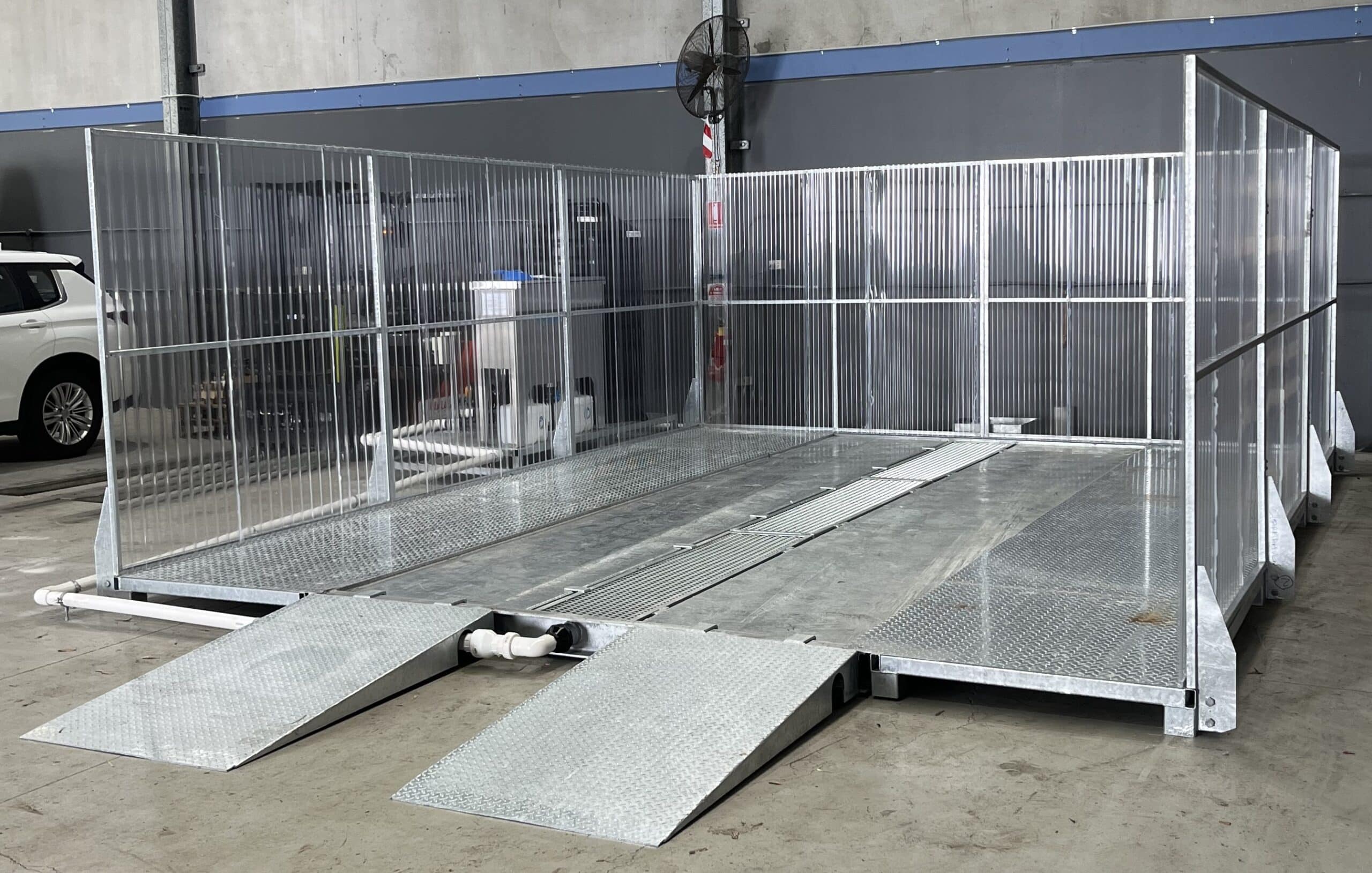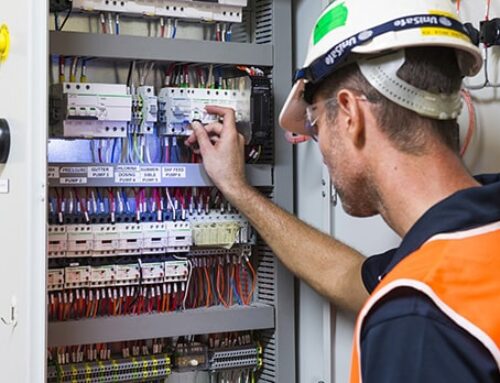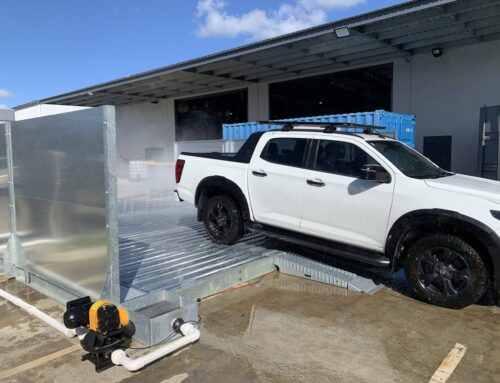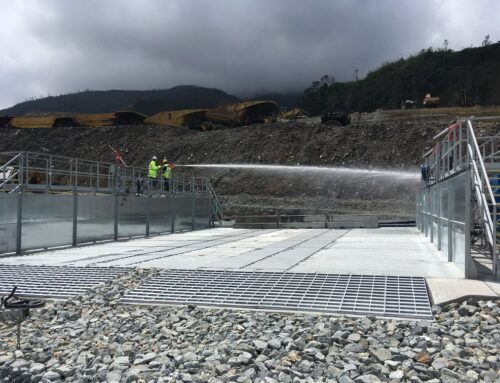If you’re asking “what comes with a wash bay?”, you’re already ahead of most. A complete wash bay setup includes much more than a slab and a hose. It’s a combination of integrated systems, equipment, infrastructure, expert service, and regulatory compliance that keeps your site or workshop efficient, legal, and future-ready.
Frustrated with suppliers who don’t understand your needs? You’re not alone. Many businesses in the mining, transport, and automotive industries are discovering that generic solutions often lead to non-compliance, inefficient operations, or worse—downtime. At EnviroConcepts, we deliver tailored water treatment systems and portable wash bays that are engineered for your application, built in Australia, and compliant with every local authority regulation.
Wash Bay Equipment Checklist: Everything You Need to Get Started
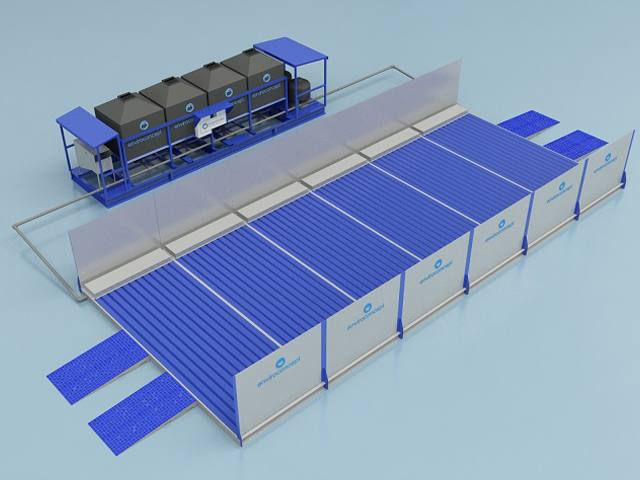
Here’s an overview of what typically comes with a standard or custom portable wash bay setup. This equipment list ensures you can meet all operational and compliance demands from day one:
Essential Components
- Wash bay floor – A modular, bunded floor system that is used to contain wash water in your site or workshop, rated for heavy loads and built for quick installation.
- Holding tanks – Capture and store wastewater from vehicle and equipment wash for treatment or removal.
- Oil water separators – Oil water separators remove hydrocarbons from wash water, critical for compliance with water authority discharge standards.
- Silt traps and screens – Remove sediment and solids to protect downstream equipment and prevent environmental discharge.
- Water recycling systems – Reduce water usage and costs through in-built recycling loops that work.
- Flush diversion system – Automatically separates stormwater from wash water during heavy rain events.
Optional Accessories
- Hot or cold high-pressure washers
- Underbody wash systems
- Bunding and ramps
- Grit pits and pump wells
- Roof structures for weather protection
- Vapourgard odour control media
- Chemical dosing systems
Our portable wash bays are designed for a wide range of industries, including mining, automotive workshops, construction sites, vehicle wash sites, and industrial equipment yards.
How to Design a Wash Bay That’s Safe, Efficient, and Compliant
Wash bay designs must start with one principle: compliance first. A water authority or council audit will quickly flag any missed elements—so it pays to plan thoroughly.
3 Factors for an Effective Design
- Containment
- Your bay must be bunded to contain contaminated wash water. Choose and get a system that includes integrated bunding or bunded floor panels.
- Flow Control and Discharge
- A flush diversion system ensures stormwater and wash water are properly segregated, a key requirement for compliance in all Australian jurisdictions.
- Treatment Process
- Include oil separators and silt traps to pre-treat waste before recycling or discharge. This keeps your operations aligned with trade waste requirements.
All wash bays should be designed based on space, access, vehicle types, cleaning frequency, and waste volumes. Portable wash bay systems provide a modular, scalable option for growing sites.
The Hidden Infrastructure Your Wash Bay Can’t Operate Without
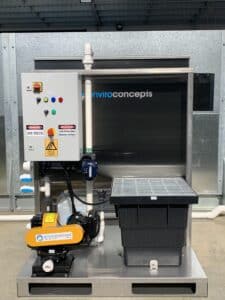
While the bay floor and hoses are visible, the real work happens behind the scenes. Without the following infrastructure, your wash bays can’t operate efficiently or legally.
Behind-the-Scenes Essentials
- Pumps and plumbing – Moves wastewater from wash areas in your site or workshop to holding tanks or treatment systems.
- Screens and filtration systems – Capture larger debris and suspended solids before they come in contact with pumps or sensitive equipment.
- Wastewater treatment systems – Depending on the discharge method used, these may include biological, chemical, or media-based systems.
- Monitoring controls – Smart control panels and sensors to manage flow, pressure, and chemical dosing in real-time.
- Discharge connection points – Plumbed to trade waste sewer systems or designated containment areas based on council policy.
Installation service must include consideration of access, construction permits, environmental sensitivity, and the potential impact on local residents.
Boosting Wash Bay Performance: Top Accessories That Make a Difference
When looking to boost the performance of your wash bay setup, get these accessories to provide the most operational value in your site or workshop:
- Water recycling systems – Cut water use by up to 80%, reducing costs and environmental impact.
- Custom bunding options – Create tailored containment for unique site constraints or heavy equipment applications.
- Silt traps – Prevent solids from clogging your system, maintaining efficient flow and extending the life of pumps.
- Chemical spill control – Especially useful in a mechanical workshop and automotive service bays.
- Odour control media – Essential when using greywater or recycling in enclosed environments.
Performance Comparison Table
| Feature | Basic Setup | Optimised Setup w/ Accessories |
| Water savings | ~30% | 70–80% |
| Compliance risk | Medium | Very Low |
| Operational efficiency | Standard | High |
| Maintenance requirements | High | Low |
Permits, Water Recycling, and Safety: Don’t Skip These Essentials
One of the most overlooked elements in the construction and setting up of a wash bay is securing the correct permits and following environmental regulations.
What You’ll Need
- Trade Waste Permit – Before discharge into any sewer network, businesses must register with their local authority and work to meet all discharge criteria.
- Council approval – Construction, drainage, and discharge infrastructure used must comply with local building and environmental guidelines.
- Safety protocols – Slip-resistant surfacing, bunded containment, spill kits, and safety signage are essential, particularly in high-traffic commercial areas.
Portable wash bays are often used due to their easy installation and removal process, enabling quicker council approvals and flexibility for relocation or site and workshop expansion.
Ongoing Wash Bay Maintenance: Cost-Saving Tips You’ll Be Glad You Knew
Maintaining your wash bay isn’t just about compliance—it directly impacts cost efficiency, equipment longevity, and operational uptime.
Routine Tasks
- Daily: Inspect bunds and grates; flush traps and filters.
- Weekly: Clean oil separator and check for sediment buildup in tanks.
- Monthly: Review system pressure, flow control settings, and replace filter media where needed.
Cost-Saving Tips
- Use quality products – Cheaper components often wear faster and result in more frequent replacements.
- Schedule regular servicing – Preventative maintenance greatly reduces downtime and emergency repairs.
- Train staff – Proper wash down practices reduce wear on the system and limit waste generation.
- Monitor wastewater volumes – Identify spikes in usage or contamination to optimise your recycling strategy.
The use of modular, customisable systems ensures that individual components can be upgraded or replaced without disrupting the full operation.
The 3-Step Process to Get Started
Starting with EnviroConcepts is fast and straightforward.
| Step | What Happens |
| 1 | Site Assessment – After you contact us, we assess your workshop or site, industry needs, and compliance requirements. |
| 2 | System Design – Our engineers create a tailored modular system for your operations, from mining to vehicle and heavy equipment washing. |
| 3 | Delivery & Installation – We manufacture and install your system with minimal disruption. |
Built for Your Process, Backed by Australian Expertise

Need to ensure compliance, save water, and streamline workshop or site operations? Our Australian-made wash bay systems are engineered for your environment, built to last, and supported locally. From mining trucks to vehicle fleet workshops, we design with purpose—because your operation doesn’t deserve a generic solution.
Let us help you customise a wash bay system built around your process, not the other way around. For more information, contact our team or request an online estimate today.

